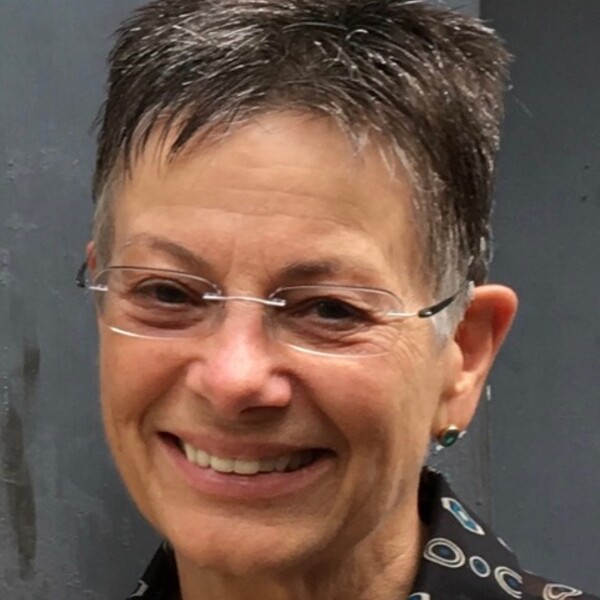Brenda Gallie
MD, FRCSC, CM, OOnt

At A Glance
- Our focus is retinoblastoma, a key to unlocking the mysteries and challenges of cancer in general\
- The RB1 tumor suppressor gene role in destabilizing the genome causing cancer initiation and progression
- Knowledge translation to change clinical care
- Point-of-care data to feed research and quality, safe care
- Global collaboration to achieve health equity
Short Bio
Brenda Gallie is Professor in Medical Biophysics, Molecular Genetics, and Ophthalmology. She directs the Retinoblastoma Program at the Hospital for Sick Children. She received The Order of Ontario and Membership, Order of Canada for delivering personalized medicine and predictive genomic studies to families. To address the global disparity of cancer care and outcomes, she developed point-of-care cancer site-specific databases, now supporting global collaboration and treatment guidelines.
Research Synopsis
The Gallie lab since 1974 has focused on all aspects of the rare children' s eye cancer, retinoblastoma, including molecular pathogenesis and clinical impact. We identified that somatic inactivation of the RB1 gene initiated retinoblastoma tumors, pointing to the role of tumor suppressor genes in cancer. If the first mutant RB1 allele (M1) arises in the germline, it predisposes to bilateral retinoblastoma and multiple other cancers, when the second allele (M2) undergoes somatic inactivation in embryonic retina and other tissues. We went on to characterize key M3 genetic changes in retinoblastoma progression and the genes involved (KIF14, CDH11, E2F3/DEK, and MYCN).
In 1982 we recognized a premalignant precursor of retinoblastoma, called retinoma. In 2008 we showed that loss of both RB1 alleles initiates retinoma, associated with genomic instability that increases as malignant retinoblastoma develops. We also showed that KIF14 oncogene overexpression corresponds to poor outcome in lung and ovarian cancers.
To translate research to efficient and effective technologies to identify the precise and usually unique RB1 mutation in each retinoblastoma family, we developed highly sensitive assays and demonstrated impact of such personalized medicine on health care costs. We founded a genetic testing lab (now Impact Genetics) to provide the highest sensitivity mutation testing for families around the world, that empowered us to lead an international team that in 2013 discovered an unrecognized form of retinoblastoma, without RB1 mutations. While the MYCN gene characteristic of embryonic neural cells is highly expressed in all retinoblastoma tumors, high-level MYCN DNA amplification initiates a subset of retinoblastoma tumors with normal RB1 genes. These RB1+/+MYCNA tumors arise in very young children, driven by the oncogene, grow aggressively. However, the genome of the RB1+/+MYCNA tumors is more stable than RB1-/- tumors.
Twenty-seven years after the RB1 gene was cloned, less than 4% of the families globally have benefited from this knowledge. Our lab now becomes the world, as we work to provide a common level of care for retinoblastoma families everywhere. One Retinoblastoma World is a concept of Global Collaboration, National Strategies, Regional Guidelines, with Personalized Genetic Medicine and Global Point-of-Care Documentation to actualize a path to optimized care for all children and families affected by retinoblastoma.
Recent Publications
- Godbout R, Dryja TP, Squire J, Gallie BL, Phillips RA. Somatic inactivation of genes on chromosome 13 is a common event in retinoblastoma. Nature 1983; 304(5925): 451-3.
- Cavenee WK, Dryja TP, Phillips RA, Benedict WF, Godbout R, Gallie BL, Murphree AL, Strong LC, White RL. Expression of recessive alleles by chromosomal mechanisms in retinoblastoma. Nature 1983; 305(5937): 779-84.
- Richter S, Vandezande K, Chen N, Zhang K, Sutherland J, Anderson J, Han L, Panton R, Branco P, Gallie B. Sensitive and efficient detection of RB1 gene mutations enhances care for families with retinoblastoma. American journal of human genetics 2003; 72(2): 253-69.
- Corson TW, Gallie BL. One hit, two hits, three hits, more? Genomic changes in the development of retinoblastoma. Genes Chromosomes Cancer 2007; 46(7): 617-34.
- Corson TW, Zhu CQ, Lau SK, Shepherd FA, Tsao MS, Gallie BL. KIF14 messenger RNA expression is independently prognostic for outcome in lung cancer. Clin Cancer Res 2007; 13(11): 3229-34.
- Dimaras H, Khetan V, Halliday W, Orlic M, Prigoda NL, Piovesan B, Marrano P, Corson TW, Eagle RC, Jr., Squire JA, Gallie BL. Loss of RB1 induces non-proliferative retinoma: increasing genomic instability correlates with progression to retinoblastoma. Hum Mol Genet 2008; 17(10): 1363-72.
- Dimaras H, Kimani K, Dimba EA, Gronsdahl P, White A, Chan HS, Gallie BL. Retinoblastoma. Lancet 2012; 379(9824): 1436-46.
- Rushlow DE, Mol BM, Kennett JY, Yee S, Pajovic S, Theriault BL, Prigoda-Lee NL, Spencer C, Dimaras H, Corson TW, Pang R, Massey C, Godbout R, Jiang Z, Zacksenhaus E, Paton K, Moll AC, Houdayer C, Raizis A, Halliday W, Lam WL, Boutros PC, Lohmann D, Dorsman JC, Gallie BL. Characterisation of retinoblastomas without RB1 mutations: genomic, gene expression, and clinical studies. The lancet oncology 2013; 14(4): 327-34.
- Dimaras H, Corson TW, Cobrinik D, White A, Zhao J, Munier FL, Abramson DH, Shields CL, Chantada GL, Njuguna F, Gallie BL. Retinoblastoma. Nature Reviews Disease Primers. 2015:15021.
